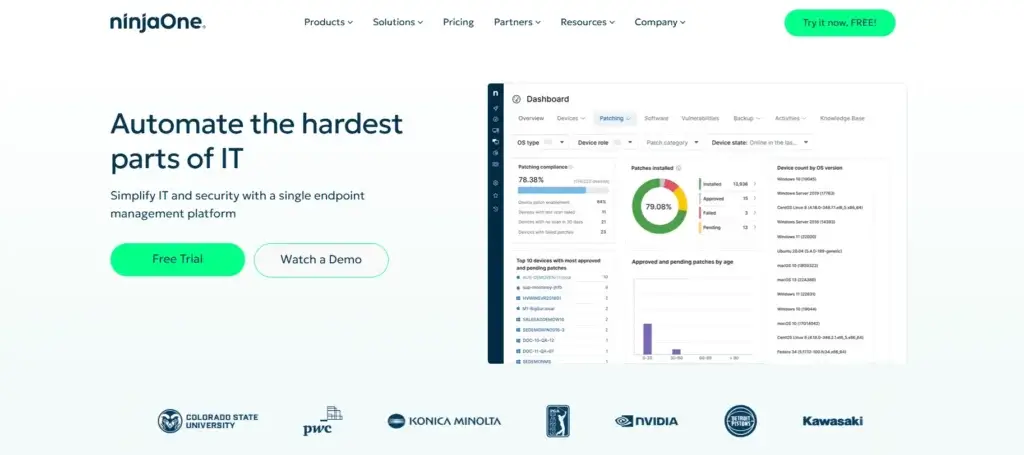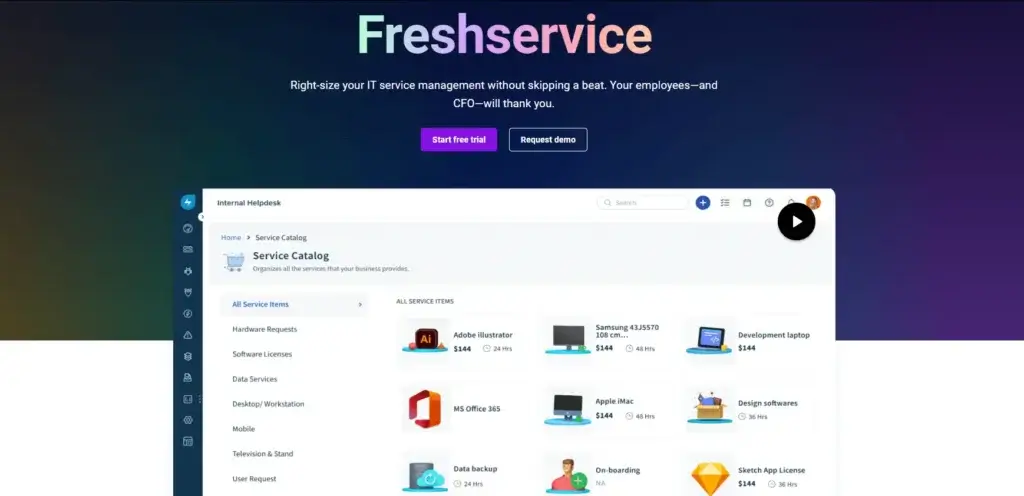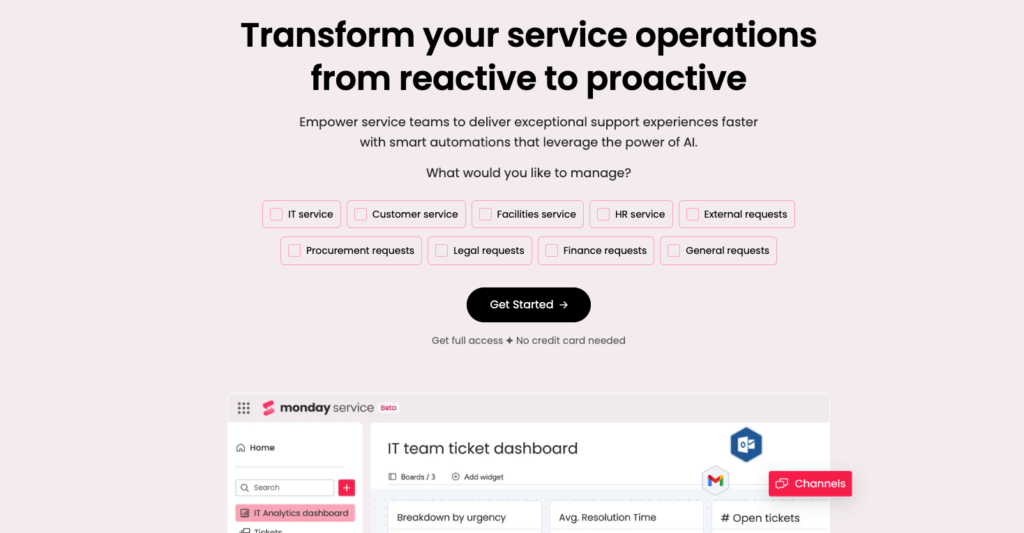
Introduction
Choosing the right IT Service Management (ITSM) software can feel overwhelming, but it doesn’t have to be. Whether you’re managing IT for a small business or a large enterprise, the right ITSM tool can make a huge difference in how smoothly your operations run.
Think of ITSM software as the backbone of your IT team. It helps streamline workflows, improve response times, and keep everything running efficiently. But with so many options on the market, how do you know which one is best for your needs? That’s where this guide comes in. We’ll walk you through the key factors to consider so you can make a confident, well-informed decision
Understanding Your Business Needs
Before exploring ITSM software options, it’s crucial to assess your organization’s unique IT requirements. The right solution should address current challenges while providing scalability for future growth. Here are some key areas to evaluate:
1. Assess Your Current IT Processes and Workflows
Understanding how your IT team operates is fundamental to selecting the right software. Consider:
- How does your team handle service requests and incidents?
- What are the most common IT challenges your organization faces?
- Are your existing processes manual, outdated, or inefficient?
2. Identify Pain Points and Areas for Improvement
ITSM software should help eliminate inefficiencies and enhance service management. Identify key areas where improvements are needed, such as:
- Reducing ticket resolution time
- Enhancing self-service capabilities for employees
- Automating repetitive IT tasks to improve efficiency
3. Set Clear Objectives for ITSM Implementation
Defining clear goals will help you choose software that aligns with your business needs. Common objectives include:
- Improving IT support response times
- Enhancing automation and AI capabilities
- Ensuring better compliance and security
By defining these needs upfront, you can better match them with the features offered by different ITSM platforms.
✅ Compare ITSM Solutions in Our Full Guide

Key Factors to Consider When Choosing ITSM Software
Selecting an ITSM solution requires a strategic approach. Here are the critical factors to keep in mind:
1. Scalability and Flexibility
As your business grows, so will your IT management needs. A scalable ITSM platform ensures that you can:
- Add new users and teams easily
- Customize workflows and automate processes to suit your growth
- Scale from a small business IT team to an enterprise-level service desk
2. Integration Capabilities
Your ITSM solution should seamlessly integrate with existing tools and software to prevent operational silos. Key integration considerations include:
- Compatibility with IT monitoring, security, and asset management tools
- APIs and third-party integrations for workflow automation
- Cloud-based vs. on-premise deployment flexibility
3. User Experience and Usability
An intuitive interface and ease of use are crucial for IT teams and end users. Look for:
- A clean, user-friendly dashboard for managing tickets and requests
- Minimal learning curve with built-in tutorials and support
- Mobile accessibility for remote IT management
4. Automation and Efficiency
Automation reduces manual workload and improves efficiency. Key features to look for include:
- AI-powered ticket management and chatbot support
- Automated workflow execution for routine IT tasks
- Real-time alerts and proactive incident resolution
5. Cost and Value
Understanding the pricing structure of ITSM software is essential for budget planning. Consider:
- Subscription-based vs. one-time licensing fees
- Feature-based pricing tiers (basic vs. enterprise packages)
- Return on investment (ROI) and long-term cost-effectiveness
6. Security and Compliance
With increasing cybersecurity threats, your ITSM software should have strong security measures, including:
- Data encryption and role-based access controls
- Compliance with industry standards such as GDPR, HIPAA, or ISO 27001
- Audit logs and activity tracking for transparency
By carefully considering these factors, you can choose an ITSM solution that enhances IT service management while aligning with your business objectives.
Feature Comparison by Business Size
| Feature | Small Businesses | Mid-Sized Companies | Enterprises |
| Ease of Use | ✅ Very easy setup & UI | ✅ Moderate learning curve | ❌ Requires extensive training |
| Scalability | ❌ Limited scalability | ✅ Moderate scalability | ✅ Highly scalable for large teams |
| Automation | ✅ Basic automation | ✅ Advanced workflow automation | ✅ AI-powered automation & orchestration |
| Integration Options | ❌ Limited third-party integrations | ✅ Standard integrations (e.g., CRM, HR) | ✅ Extensive integrations with security, cloud, and IT tools |
| Customization | ❌ Minimal customization | ✅ Customizable workflows | ✅ Fully customizable ITSM processes |
| Remote Management | ✅ Cloud-based & remote-friendly | ✅ Hybrid support | ✅ Full remote & on-premise management |
| Compliance & Security | ❌ Basic security & compliance | ✅ Standard security controls | ✅ Advanced compliance (ISO 27001, GDPR, HIPAA) |
| Self-Service Portals | ✅ Basic help desk & FAQs | ✅ Enhanced self-service & chatbots | ✅ Fully AI-driven self-service & automation |
| Best ITSM Solutions | NinjaOne, monday service | Freshservice, SolarWinds | ServiceNow, ManageEngine |
Highlighting Top ITSM Solutions
Now that you know what to look for in an ITSM solution, let’s explore some of the top tools that stand out in the market. Each of these platforms offers unique benefits and features that cater to different business needs.

NinjaOne is a cloud-based IT management platform known for its ease of use and automation capabilities. It simplifies endpoint management, patching, and service desk operations, making it ideal for IT teams looking for efficiency and scalability
✅ Key Features:
- Unified endpoint management and monitoring
- Automated patch management and software deployment
- Remote access and troubleshooting capabilities
- Integration with existing IT and security tools
💡Best For:
- Businesses looking for a user-friendly and scalable ITSM solution
- IT teams focusing on automation and remote management

Freshservice is a modern ITSM tool that emphasizes AI-driven automation and ease of use. It provides comprehensive IT support with a service desk, asset management, and AI-powered ticket resolution features.
✅ Key Features:
- AI-powered virtual agent for self-service support
- IT asset and configuration management
- Smart automation for IT workflows
- Multi-channel support for seamless IT service delivery
💡Best For:
- Businesses seeking AI-enhanced ITSM solutions
- Organizations need a balance of automation and user-friendliness

Comparison Table
To help you compare these ITSM tools at a glance, here’s a breakdown of their core features:
| Feature | NinjaOne | Freshservice | monday service |
| Cloud-based | ✅ | ✅ | ✅ |
| AI-powered automation | ❌ | ✅ | ✅ |
| Customizable workflows | ✅ | ✅ | ✅ |
| Remote access | ✅ | ❌ | ❌ |
| IT Asset Management | ✅ | ✅ | ❌ |
| Self-service portal | ✅ | ✅ | ✅ |
| Third-party integrations | ✅ | ✅ | ✅ |

Implementation Strategies
Choosing the right ITSM software is just the first step. Here’s how to implement it effectively:
-
Conduct a Needs Assessment – Gather input from IT staff and end-users to define priorities.
-
Test with a Free Trial – Most ITSM vendors offer free trials. Use this period to assess usability and feature effectiveness.
-
Train Your Team – Provide hands-on training to ensure smooth adoption.
-
Customize Workflows – Configure automation and integrations to fit your organization’s workflow.
-
Monitor and Optimize – Regularly review performance metrics and make necessary adjustments.
By following these steps, you’ll ensure a successful ITSM implementation that improves efficiency and service delivery.









